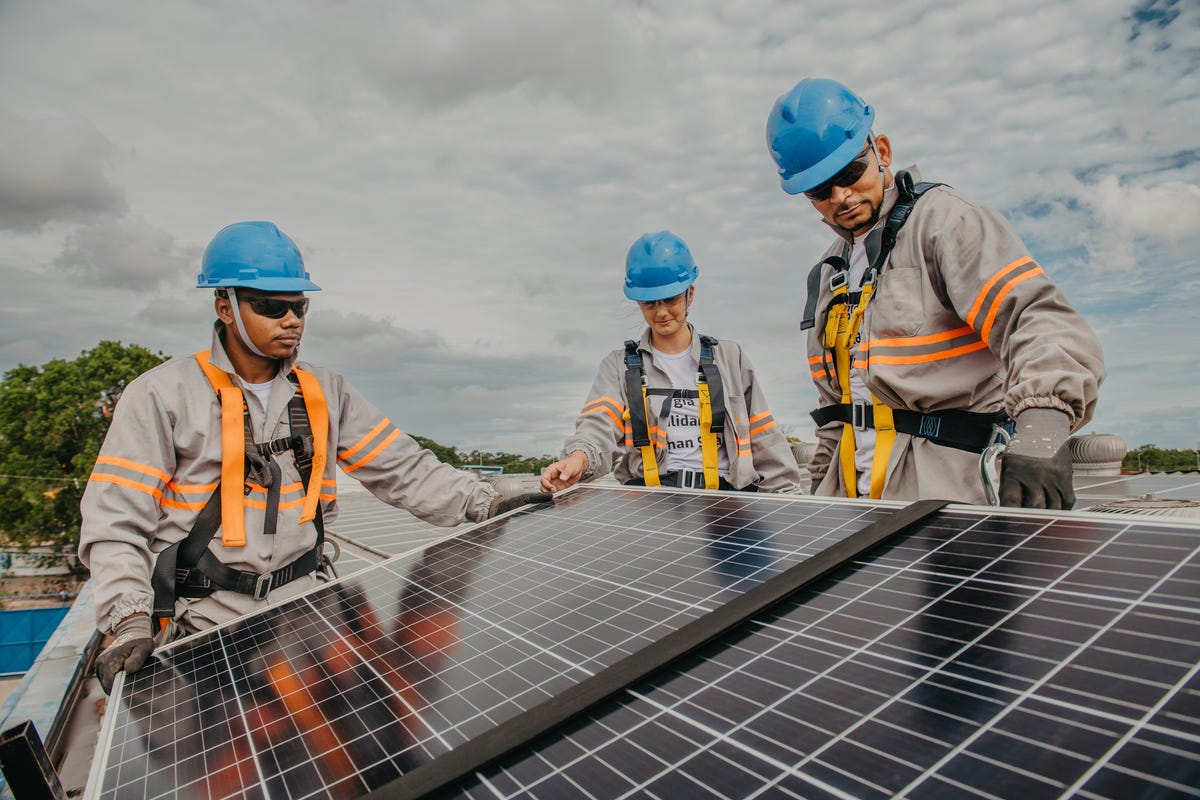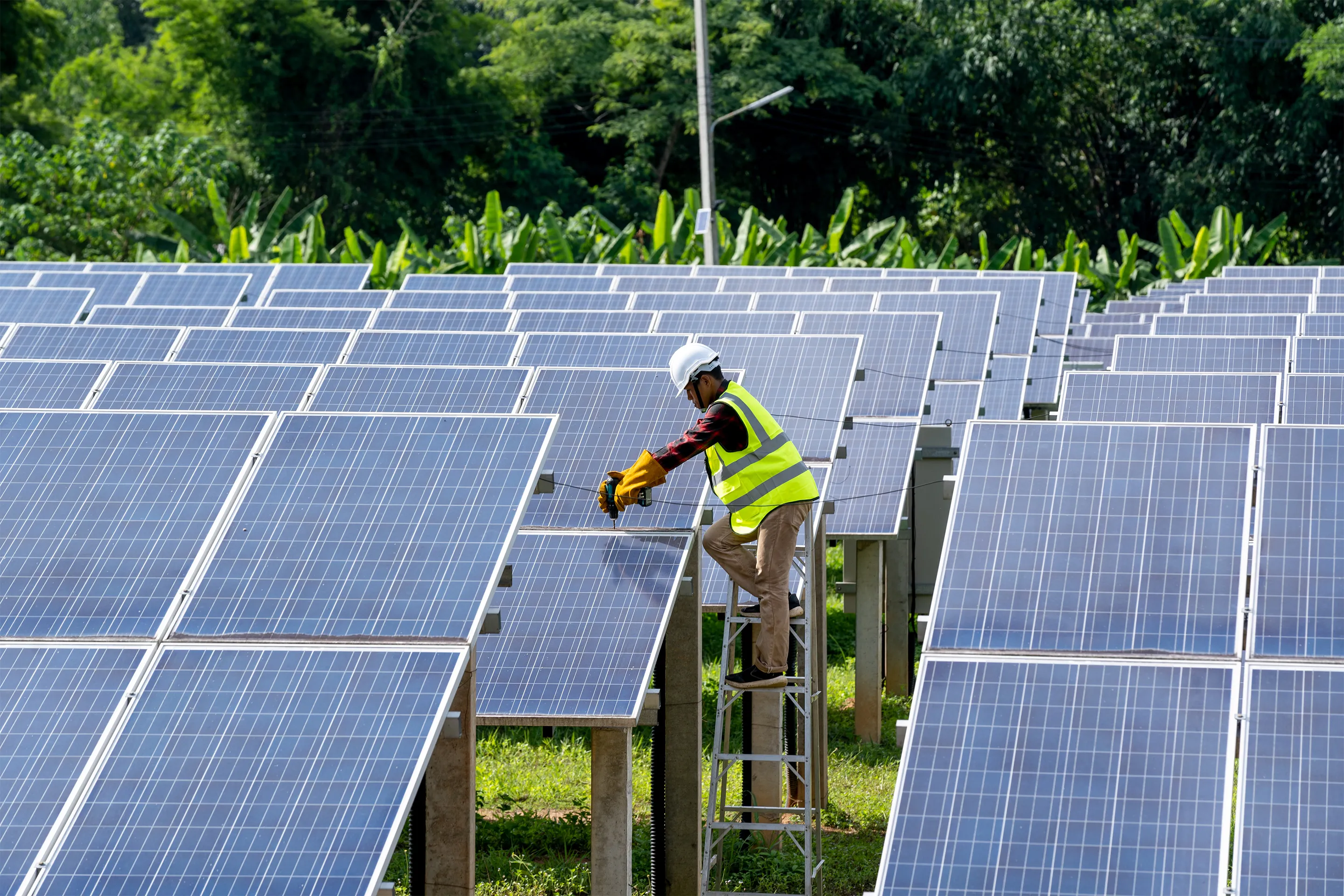A Biased View of Solar Panel Company Virginia
A Biased View of Solar Panel Company Virginia
Blog Article
Virginia SREC Credits: Lumina Solar Focuses On Offering Advanced Photovoltaic Solutions For Residences And Companies
History and Establishing
Have you ever questioned how a photovoltaic panel business springs from a mere spark of inspiration into a powerhouse of sustainable energy? It frequently starts with a vision-- one fueled by a blend of innovation, determination, and a pinch of serendipity. The journey of numerous solar companies mirrors the development of the technology itself: from bulky, ineffective panels to smooth, high-efficiency marvels harnessing the sun's bounty.
The Early Days
In the late 20th century, when solar power was still a specific niche principle, leaders planted seeds for what would end up being an international movement. Imagine a little workshop filled with curious engineers, tirelessly exploring with solar batteries. Their passion was palpable, frequently driven by a desire to fight climate change and reduce dependence on fossil fuels.
One such anecdote has to do with a founder who, inspired by a camping trip, recognized that even in remote areas, the sun might power essential gadgets. This easy observation triggered a business's objective to democratize access to tidy energy.
Founding Concepts

- Development: Constantly pressing the borders of solar technology to enhance performance and resilience.
- Sustainability: Committing to environmentally friendly production and reducing carbon footprints.
- Availability: Making sustainable energy services budget friendly and useful for daily users.
Milestones in Growth
| Year | Secret Event |
|---|---|
| 1985 | Company established in a little garage, concentrating on research study and development. |
| 1995 | Very first business photovoltaic panel item introduced, gaining regional attention. |
| 2005 | Broadened to worldwide markets, accepting global renewable resource objectives. |
| 2015 | Presented cutting-edge photovoltaic panel technology with improved energy conversion. |
Isn't it remarkable how these incremental actions, often neglected, shape the energy landscape today? The photovoltaic panel company story is not almost technology; it's about an unrelenting mission for a brighter, cleaner future.

Developments in Photovoltaic Panel Technologies
Ever seen how some photovoltaic panels gleam brighter and last longer? It's not magic; it's the science of photovoltaic effectiveness. Modern photovoltaic panel business invest greatly in technologies like bifacial cells, which catch sunshine from both sides, boosting energy harvest without expanding roofing space. Have you ever wondered why some panels perform much better on cloudy days? That is because of advances in thin-film solar technology, which prospers under diffused light conditions.
Product Variations Tailored to Unique Needs
One size never fits all. Photovoltaic panel companies now provide:
- Monocrystalline panels for optimum effectiveness and sleek aesthetic appeals, suitable for space-constrained rooftops.
- Polycrystalline panels, which provide an affordable alternative without sacrificing excessive output.
- Building-integrated photovoltaics (BIPV), combining solar tech perfectly into architectural aspects like windows and facades.
Selecting the right item isn't practically in advance expense; it's about matching your environment, energy goals, and long-lasting savings. For instance, homes shaded by trees require panels that excel in low-light situations, something numerous neglect up until energy bills climb up all of a sudden.
Technical Tips for Ideal Selection
- Assess the temperature coefficient-- lower worths mean panels lose less performance on hot days.
- Look for panels with improved anti-reflective finishes to take full advantage of light absorption.
- Think about the panel's warranty not simply for problems, but for ensured power output over years.
- Don't ignore the value of the inverter technology combined with the panels; it can make or break your system's efficiency.
Beyond Panels: Emerging Patterns
Picture photovoltaic panels that change their angle automatically to chase the sun-- tracking systems are ending up being more available, increasing yield considerably. Or solar tiles that blend undetectably into your roofline, transforming your home into a quiet, self-sufficient power generator. These developments are improving what a photovoltaic panel business uses-- not just items, however incorporated energy services.
Market Presence and Global Operations
Ever question why some photovoltaic panel companies seem to grow up in every corner of the globe while others hardly make a ripple? The difference lies not simply in technology but in mastering the art of browsing diverse markets. Expanding internationally resembles planting seeds in various environments-- you should comprehend each environment's distinct conditions to flourish.
Take, for example, the elaborate dance of logistics and supply chain management. Shipping panels midway across the world isn't almost range; it's about timing, customs, tariffs, and adjusting to local need variations. A business with robust international operations anticipates these variables, making sure panels show up on schedule without inflating expenses. This foresight is no little task and frequently separates market leaders from fans.
Secret Techniques for Expanding Market Presence
- Localized manufacturing: Establishing production centers near target audience minimizes shipping delays and import intricacies.
- Strategic collaborations: Collaborating with regional firms speeds up market penetration and constructs trust.
- Adaptive product style: Customizing photovoltaic panel tech to weather, sun strength, and infrastructure subtleties improves efficiency and approval.
What about the human element? Photovoltaic panel companies running worldwide must reconcile cultural distinctions and regulative subtleties without forgeting their core objective. What works in a sun-drenched desert may falter in a damp seaside area. Often, the most innovative service is simply listening-- taking in local insights to improve innovation and method.
Professionals typically recommend a phased rollout rather than a shotgun expansion. Why run the risk of overextension when determined development builds sustainable momentum? Scaling wisely suggests balancing aspiration with operational resilience - Solar Panel Company Virginia. After all, read more in the race for sustainable energy dominance, persistence can be as valuable as speed
Ecological Effect and Sustainability Practices
When solar panels initially emerged, lots of presumed they carried zero ecological baggage. The truth is more nuanced. The production of solar batteries involves unusual earth metals and energy-intensive procedures, which can leave a substantial carbon footprint before the panels even reach roofs. The real ecological expense depends greatly on the sustainability practices used by the solar panel business throughout the lifecycle of their products.
How typically do we stop briefly to consider what happens to solar panels at the end of their beneficial life? Unlike batteries or electronic devices, solar panels can last 25-30 years, but disposal and recycling paths stay underdeveloped in lots of regions. A business devoted to lowering environmental damage will have a robust prepare for recycling photovoltaic products, restoring valuable silicon, glass, and metals to avoid landfill accumulation.
Key Sustainability Techniques
- Making use of low-impact manufacturing methods that decrease water and energy consumption.
- Implementing closed-loop systems to recycle production waste back into new panels.
- Taking part in transparent supply chain audits to ensure ethical sourcing of basic materials.
- Designing panels for much easier disassembly to assist future recycling efforts.
It deserves noting that some solar companies have pioneered ingenious approaches, such as incorporating naturally degradable elements or using less toxic chemicals throughout fabrication. This not just minimizes environmental pressure but also sets a precedent for the market. The question remains: can the solar market truly pivot towards a circular economy design without sacrificing efficiency or affordability?
Professional Tips for Evaluating Sustainability
- Ask about the business's commitment to carbon-neutral manufacturing and whether they balance out emissions.
- Examine if they partner with licensed recycling centers dedicated to solar panel waste.
- Look for openness reports detailing ecological impacts and sustainability goals.
- Consider the durability and warranty of panels as an indirect procedure of resource performance.
In the end, selecting solar power needs to suggest more than simply slashing electricity costs; it has to do with supporting a future where energy is gathered responsibly and waste is attentively managed. Solar panel business that accept this viewpoint not just brighten homes but also cast a brighter light on sustainable innovation.
Report this page